
Young Blood
I'm a Young
Centre for Central European Architecture, U Půjčovny 4, Praha 1
26.6.2004 - 26.09.2004
The youngest exhibition institution in the Czech architectural basin presents a very interesting exhibition in its exhibition space. CEEA approached 45 young Czech studios with an invitation to participate in a joint project with the worldly name "Young Blood". The project has several parts - according to the countries in which it takes place. The first country is the home Czech Republic and its architects. Thus, the subtitle of the first exhibition sounds: "I'm a Young "Czeck" Architect".
The curators of the exhibition posed a fundamental question to the architects - "how do you understand the architectural profession and its practice in the country where you work?", to which they had to respond under the pressure of the distorted English motto "I'm a Young "Czeck" Architect". What does the English-Czech dictionary say about the term "check": verify, examine, stop, confirmation, obstacle, check, checked pattern, receipt, account. You surely won’t be surprised that I was extremely curious about the exhibition. Such a wide conceptual space offered to mentally fresh young architects had to bear fruit.
A great disappointment is the final number of presented exhibits - out of 45 contacted, 12 studios applied, and they ultimately created only 9 exhibits. Even so, the visitor has a lot to think about. The broad assignment yielded diverse responses. Some architects tried to adhere to the motto of the exhibition in their exhibits, while others resigned and took the exhibition as an opportunity to showcase their projects and initial realizations. The close physical proximity of different approaches sharpens the atmosphere and invites the visitor to reflection.
The ARW architects handled the assignment very well, as they created a "architectural" space - a narrow passage defined by black panels with a mirrored floor. The offered passage through the corridor is hindered by a tangle of symbolic restrictions, norms, and laws. These are expressed in reality as plexiglass plates on stainless steel springs. The visitor is thus actually slapped and experiences the same feeling as the young architect during their work. Personally, I consider the exhibit to be the most conceptually successful of the entire exhibition.
The circle of the Brno exhibition is represented by agp (Gale + Palaščák) and Maura (Veselá). Their contribution is like beating already once threshed straw. A relatively boring drawing table with photographs of realizations and a video clip of hunting natural geometry with geotextiles is a very primitive installation. The architects' workload probably prevented them from more widely developing their thinking potential.
The duo ai5 attempted to demonstrate their own architectural manifesto. Their effort comes across more as a shallow citation of the latest urban trends in the relationship between brownfield and greenfield. The unstable theoretical platform of the duo ai5 is reflected in the exhibited project "Scaffolding is the solution", a variant expansion of the Old Town Hall and subsequently solving the distressed urban form of the Old Town Square.
One exhibit is presented in the CEEA space by a trio of studios from Ostrava. Only by studying the exhibition catalog did I understand the concept of the trio of panels defining an internal space - the area of creation and an external shell - the presentation of realizations and projects to the outside world. The content is excellent, the realization less fortunate. The overly prominent texture of the OSB boards suppresses small photographs, and the childish composition of blocks diminishes the strength of the concept. I personally don’t understand why the studios present together, as they are connected by hardly anything aside from their place of operation.
The Zlín Ellement showed that architecture is complemented by contemporary design. Three musketeers (who are actually four) and one male designer placed a foam bed in the exhibition that hides documentation of their work under its flaps. The soft exhibit aptly demonstrates the lightness with which the studio realizes its orders.
The Prague Escadra suppressed the desire for self-presentation and pointedly highlighted the barrier between the professional and lay public in the field of architecture. The installation situation created from a pub environment clearly defines two chairs = two subjects sitting at the table = places of dialogue. The interaction between "high culture" and "low tabloid consumer" grinds so much that not even all-unifying beer can lubricate the gears. The critique of the shallowness of the life of the Czech petty-bourgeois is expressed in the publication of the newspaper Plesk, whose content is meant to show that architecture as art cannot be properly realized in the current consumer atmosphere of the Czech Republic.
The practicing teachers from the Brno FA Knesl + Kynčl present themselves as a cheerful group. The proximity of their outhouse to the ARW corridor resembles a clash between Jeff Koons and Richard Serra. Personally, I prefer Serra... Nevertheless, back to the "concept as a chip". The layout of the outhouse exhibit is simple - the architect is located within the defined space - the Czech Republic, surrounds himself with images of foreign architecture, thoughtlessly transcribes them into his own national proposals, while simultaneously disgracing Czech politics. A 100% response to the theme of the exhibition. Just by the way - why is Koolhaas ("context is fuck") inspired by the studio, in whose manifesto it says "context at all levels"?
The duo m4 architects created an object that is nice and beautifully graphically executed. According to the proclamation, it is supposed to demonstrate the burden of bringing an architectural proposal into physical form. I don’t know if it succeeded in showing "what lies on the architect's table", but the packaging of the product is beautiful.
If I consider the alley from ARW to be the most successful exhibit of the exhibition, Osamu Okamura is the most interesting. Osamu solved his office shortage and his participation in the exhibition in one stroke. He essentially exhibited himself, which is an absolute adherence to the theme of the exhibition. Osamu is simply a dude.
The Young Blood exhibition showed how young architects live. Rather than problems with obtaining contracts and investors, young Czech architects are troubled by the political atmosphere and the machinery of state administration. The lightness of academic design is replaced in real life by a hard confrontation with the construction realization itself. The distancing of the shores of the lay and professional public is also on the agenda for young architects. CEEA provided junior architects with a space for expression, which they would not have achieved in conservative exhibition galleries or magazines.
participants:
ARW architects | www.arw.cz
studio agp | www.agp.cc
Maura
studio ai5 | www.ai5.cz
studio 38 | www.atelier38.cz
ATOS-6 | www.atos6.cz
kamil mrva architects | www.mrva.net
Ellement | www.ellement.cz
ESCADRA architects | www.escadra.com
knesl + kynčl architects | www.kneslkyncl.cz
m4 architects | www.m4.cz
okamura architect | web.quick.cz/okamura
26.6.2004 - 26.09.2004
The youngest exhibition institution in the Czech architectural basin presents a very interesting exhibition in its exhibition space. CEEA approached 45 young Czech studios with an invitation to participate in a joint project with the worldly name "Young Blood". The project has several parts - according to the countries in which it takes place. The first country is the home Czech Republic and its architects. Thus, the subtitle of the first exhibition sounds: "I'm a Young "Czeck" Architect".
The curators of the exhibition posed a fundamental question to the architects - "how do you understand the architectural profession and its practice in the country where you work?", to which they had to respond under the pressure of the distorted English motto "I'm a Young "Czeck" Architect". What does the English-Czech dictionary say about the term "check": verify, examine, stop, confirmation, obstacle, check, checked pattern, receipt, account. You surely won’t be surprised that I was extremely curious about the exhibition. Such a wide conceptual space offered to mentally fresh young architects had to bear fruit.
A great disappointment is the final number of presented exhibits - out of 45 contacted, 12 studios applied, and they ultimately created only 9 exhibits. Even so, the visitor has a lot to think about. The broad assignment yielded diverse responses. Some architects tried to adhere to the motto of the exhibition in their exhibits, while others resigned and took the exhibition as an opportunity to showcase their projects and initial realizations. The close physical proximity of different approaches sharpens the atmosphere and invites the visitor to reflection.
The ARW architects handled the assignment very well, as they created a "architectural" space - a narrow passage defined by black panels with a mirrored floor. The offered passage through the corridor is hindered by a tangle of symbolic restrictions, norms, and laws. These are expressed in reality as plexiglass plates on stainless steel springs. The visitor is thus actually slapped and experiences the same feeling as the young architect during their work. Personally, I consider the exhibit to be the most conceptually successful of the entire exhibition.
The circle of the Brno exhibition is represented by agp (Gale + Palaščák) and Maura (Veselá). Their contribution is like beating already once threshed straw. A relatively boring drawing table with photographs of realizations and a video clip of hunting natural geometry with geotextiles is a very primitive installation. The architects' workload probably prevented them from more widely developing their thinking potential.
The duo ai5 attempted to demonstrate their own architectural manifesto. Their effort comes across more as a shallow citation of the latest urban trends in the relationship between brownfield and greenfield. The unstable theoretical platform of the duo ai5 is reflected in the exhibited project "Scaffolding is the solution", a variant expansion of the Old Town Hall and subsequently solving the distressed urban form of the Old Town Square.
One exhibit is presented in the CEEA space by a trio of studios from Ostrava. Only by studying the exhibition catalog did I understand the concept of the trio of panels defining an internal space - the area of creation and an external shell - the presentation of realizations and projects to the outside world. The content is excellent, the realization less fortunate. The overly prominent texture of the OSB boards suppresses small photographs, and the childish composition of blocks diminishes the strength of the concept. I personally don’t understand why the studios present together, as they are connected by hardly anything aside from their place of operation.
The Zlín Ellement showed that architecture is complemented by contemporary design. Three musketeers (who are actually four) and one male designer placed a foam bed in the exhibition that hides documentation of their work under its flaps. The soft exhibit aptly demonstrates the lightness with which the studio realizes its orders.
The Prague Escadra suppressed the desire for self-presentation and pointedly highlighted the barrier between the professional and lay public in the field of architecture. The installation situation created from a pub environment clearly defines two chairs = two subjects sitting at the table = places of dialogue. The interaction between "high culture" and "low tabloid consumer" grinds so much that not even all-unifying beer can lubricate the gears. The critique of the shallowness of the life of the Czech petty-bourgeois is expressed in the publication of the newspaper Plesk, whose content is meant to show that architecture as art cannot be properly realized in the current consumer atmosphere of the Czech Republic.
The practicing teachers from the Brno FA Knesl + Kynčl present themselves as a cheerful group. The proximity of their outhouse to the ARW corridor resembles a clash between Jeff Koons and Richard Serra. Personally, I prefer Serra... Nevertheless, back to the "concept as a chip". The layout of the outhouse exhibit is simple - the architect is located within the defined space - the Czech Republic, surrounds himself with images of foreign architecture, thoughtlessly transcribes them into his own national proposals, while simultaneously disgracing Czech politics. A 100% response to the theme of the exhibition. Just by the way - why is Koolhaas ("context is fuck") inspired by the studio, in whose manifesto it says "context at all levels"?
The duo m4 architects created an object that is nice and beautifully graphically executed. According to the proclamation, it is supposed to demonstrate the burden of bringing an architectural proposal into physical form. I don’t know if it succeeded in showing "what lies on the architect's table", but the packaging of the product is beautiful.
If I consider the alley from ARW to be the most successful exhibit of the exhibition, Osamu Okamura is the most interesting. Osamu solved his office shortage and his participation in the exhibition in one stroke. He essentially exhibited himself, which is an absolute adherence to the theme of the exhibition. Osamu is simply a dude.
The Young Blood exhibition showed how young architects live. Rather than problems with obtaining contracts and investors, young Czech architects are troubled by the political atmosphere and the machinery of state administration. The lightness of academic design is replaced in real life by a hard confrontation with the construction realization itself. The distancing of the shores of the lay and professional public is also on the agenda for young architects. CEEA provided junior architects with a space for expression, which they would not have achieved in conservative exhibition galleries or magazines.
participants:
ARW architects | www.arw.cz
studio agp | www.agp.cc
Maura
studio ai5 | www.ai5.cz
studio 38 | www.atelier38.cz
ATOS-6 | www.atos6.cz
kamil mrva architects | www.mrva.net
Ellement | www.ellement.cz
ESCADRA architects | www.escadra.com
knesl + kynčl architects | www.kneslkyncl.cz
m4 architects | www.m4.cz
okamura architect | web.quick.cz/okamura
The English translation is powered by AI tool. Switch to Czech to view the original text source.
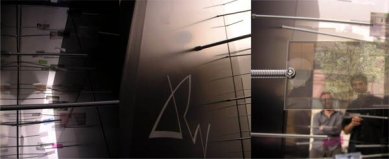
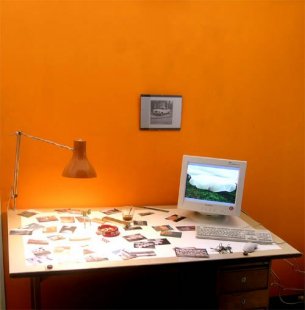
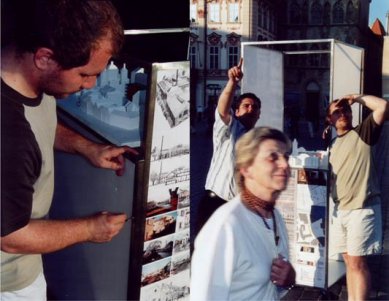
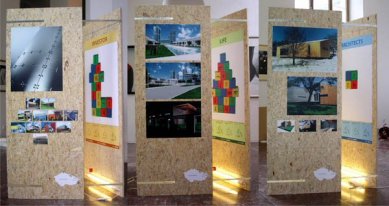
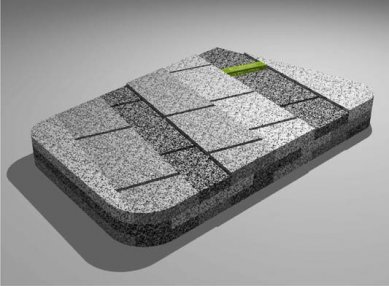
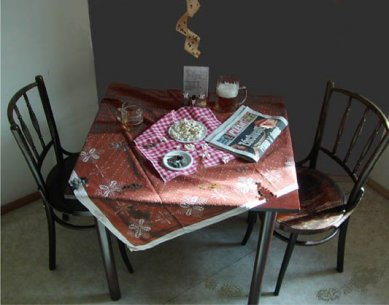

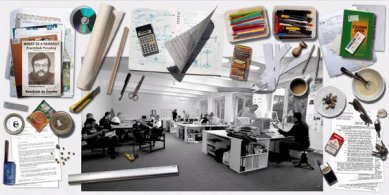
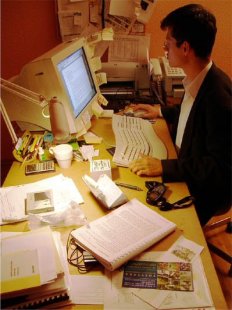
0 comments
add comment










